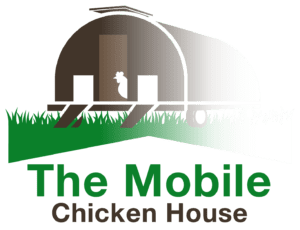The 6 Best Chicken Breeds For Laying Eggs [and tips on when to buy them]
Have you ever dreamed of starting your own flock of egg-laying chickens?
Whether you are a serious chicken farmer making a living or a backyard chicken owner wanting fresh, healthy eggs, you need to make a wise decision about the best kind of chickens to raise.
After all, you can’t place any old chickens in a coop and expect them to thrive!
Not only do you need to choose a breed of egg-laying chicken that will thrive in your geographic area, but you also need to select the kind of chicken that produces the eggs you want.
If these decisions make you throw your hands up in despair, don’t panic.
That’s why we’re here.
In this article, the team at The Mobile Chicken House put their years of experience in raising egg-laying chickens to use so you can understand the ins and outs of egg-laying chicken breeds.
When we’re finished, you’ll know all about egg-laying chickens and will be able to make the right decision about which breed is best for you.
So, let’s move past the pleasantries and get started!
Where To Get Egg Laying Chickens
If you want to start raising chickens, you need to know where to look to get them.
If you’re ok with any kind of egg-laying chicken, you can often pick up some young chickens at a local hardware or feed store.
While there’s nothing wrong with those chickens, we recommend doing more research and deciding on the specific breed of laying hen you want. If you have a specific type of egg-laying chicken in mind, you may have to turn to a chicken hatchery to get your birds.
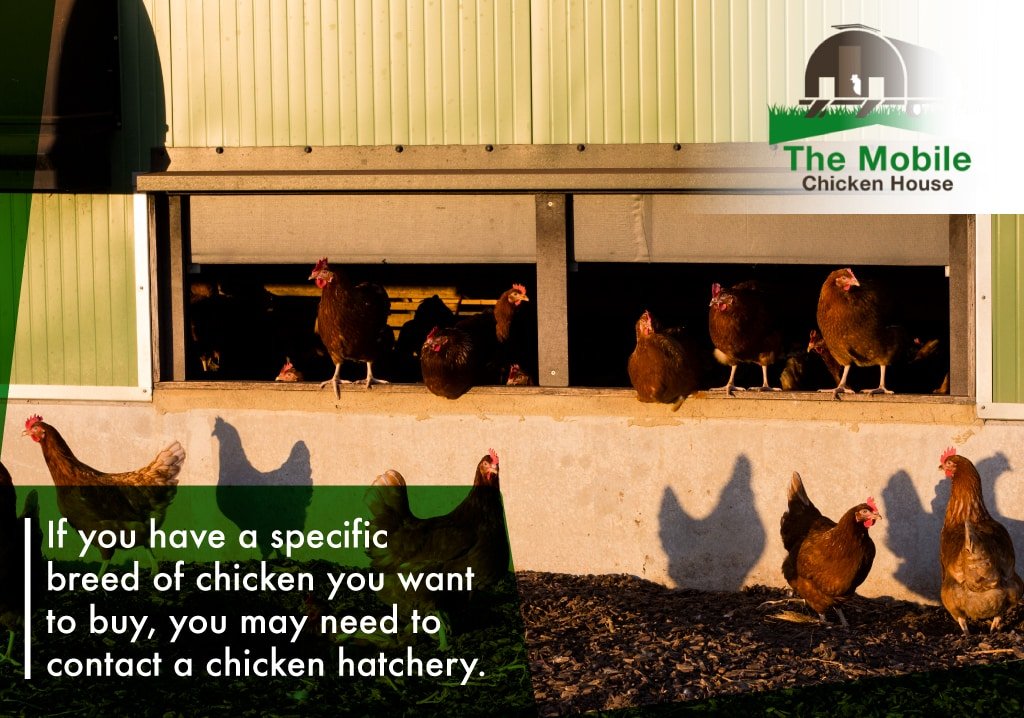
Most hatcheries have a wide variety of chicks for sale - and if they don’t have what you want, they can probably point you in the right direction.
Thankfully, most chicken hatcheries also deliver chickens directly to you. While this is a plus, remember that the less transport time your chicks experience, the less stressed they will be when they arrive.
If you are a commercial farmer wanting to raise chickens, a hatchery is definitely the place to go because that is where you can get a large number of chicks. Unless, of course, you want to visit every Tractor Supply within 5 hours of your farm and buy them all out!
Just make sure you choose a hatchery that has a good reputation. Usually, the best option is to talk to a local farmer or chicken enthusiast. They’ll be able to give your great recommendations for hatcheries that utilize humane methods and produce healthy chicks.
If your source is certified by the National Poultry Improvement Program, as all hatcheries should be, that’s even better.
Realize that anyone can sell chicks, and if you’re looking for reliable egg-laying hens, you’re better off knowing your birds’ lineage and this particular strain’s history.

What Age Chicken Should I Buy?
The age of chicken you should buy depends both on your goals and your experience.
Do you have time and energy to nurture day-old chicks?
Or do you want to skip the chick stage and get eggs right away?
If you start by answering these questions, you’ll be well on your way to buying birds at just the right age for your needs.
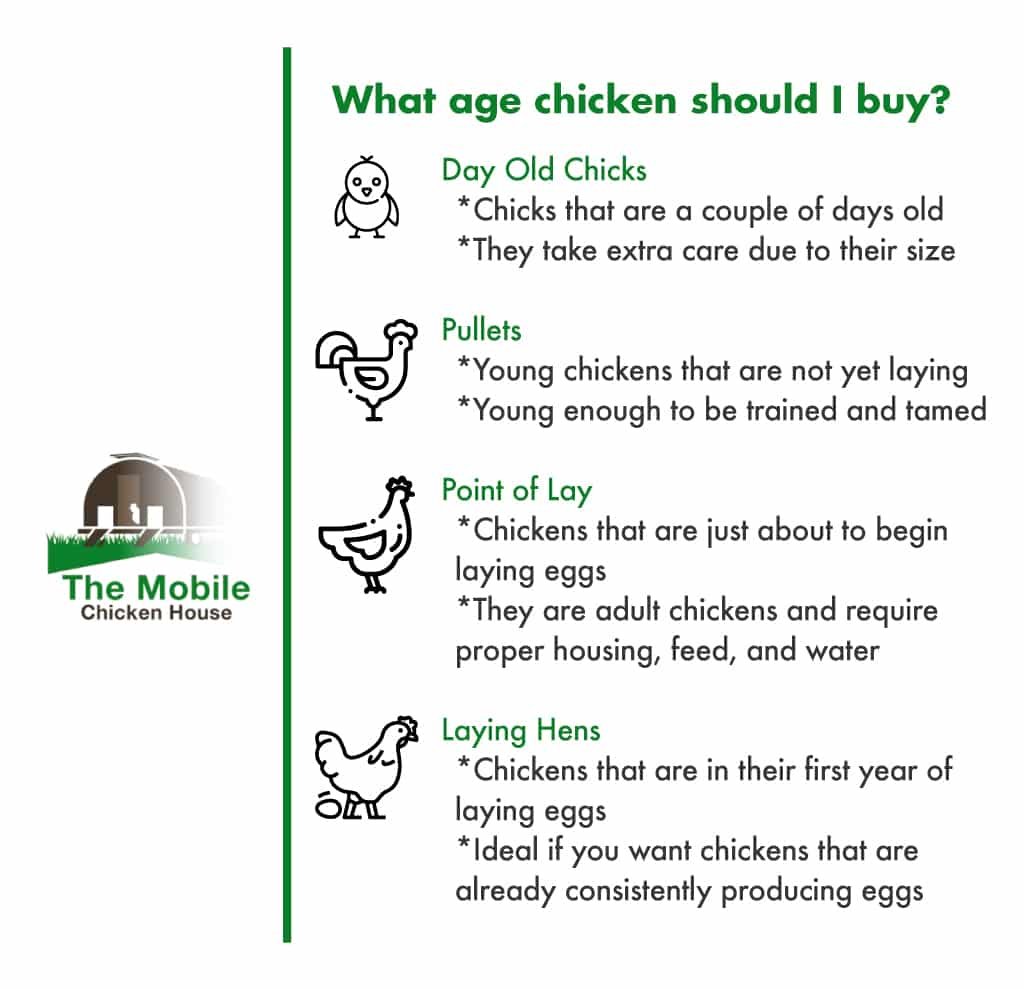
Day Old Chicks
Day-old chicks are simply adorable - but don’t let that fuzzy cuteness deceive you.
Unless you have time to look after them carefully, day-old chicks are best left to experienced poultry keepers.
However, if you wish to start with baby chickens, it is a gratifying experience to watch them develop through all of their growth phases, and they will often develop a special motherly bond with you. So if you are a backyard flock-keeper, maybe that is the way to go for you.
Just make sure you know how to take care of these fuzzballs if you do purchase them. For more on keeping your chickens healthy and training your chickens, check out our blog.
Pullets
Pullets are young chickens that are no longer in the baby stage. They have adult feathers and don’t require all the special care that day-old chicks need.
Purchasing pullets is a sort of happy medium - they are bigger and stronger than baby chicks but still young enough to easily tame and train.
If you want eggs, you’ll need to be patient. But give it a few weeks, and you’ll be eating delicious frittatas and omelets!
Point of Lay
Point of lay chickens are birds that are just about to begin laying eggs.
Predicting when hens will first start laying eggs is difficult to pin down precisely. However, if you purchase point-of-lay chickens, you can definitely expect to have farm-fresh eggs within a week or two at most.
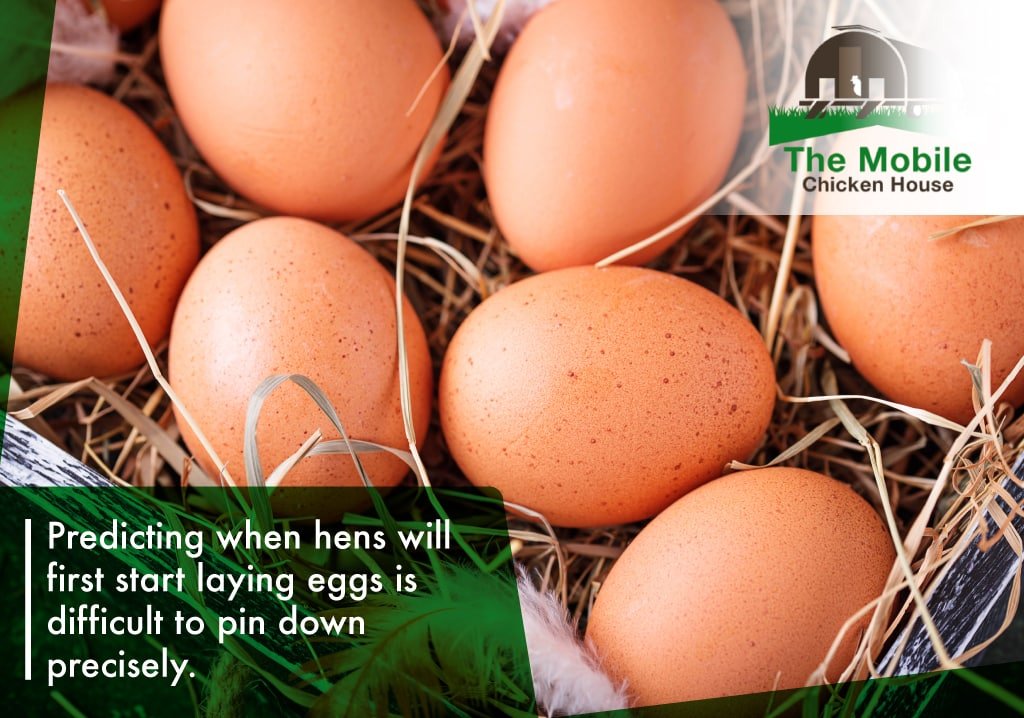
These egg-laying chickens are considered adult birds, so they should be sturdy and strong. To keep them going strong you will need to give them proper housing, quality feed, fresh water, and regular health check-ups.
Laying Hens
Birds that fall into this category are chickens that are already well into their first year of laying eggs.
If the process of raising chicks is important to you, then buying laying hens is a bad idea.
However, if you want eggs, and you want them now - then this is the bird for you. Laying hens are adult birds that are already consistently producing eggs. Not only that, the seller should be able to tell you the number of eggs you can expect.
Logically, laying hens are more expensive than other ages of chickens. However, the price depends on the breed of chicken, so keep this in mind when making your purchase.
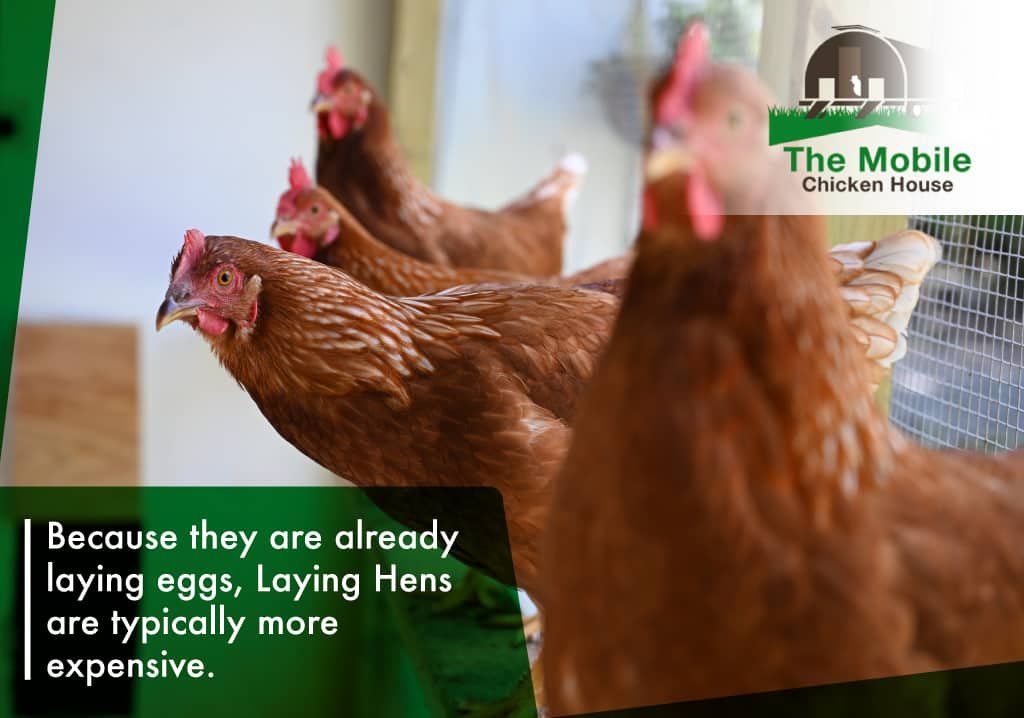
Types Of Egg Laying Chickens
Picking the right breed of chicken can be the difference between thoroughly enjoying every moment with your birds or questioning why you ever wanted chickens in the first place.
If you are still in the process of choosing the breed that is best suited to meet your goals, you need to ask yourself several questions.
- Why do you want chickens? If you want chickens for meat, the breed you choose will vary wildly from egg-laying chickens. This article focuses on chicken breeds that are good for laying eggs.
- How will you take care of your chickens? Some breeds require a lot of time and energy from you, while others are quite self-reliant.
- Which kind of breed thrives in your climate? In general, chickens thrive in pretty much any climate. But if you are getting your chickens shipped from a distance, double-check to make sure they will thrive in your area.
- How much do different chicken breeds cost? Most chicken breeds are similar in cost, but some exotic birds are pricey.
- What kind of personality do you want your chickens to have? It’s not fair to expect every chicken within a breed to be exactly the same, but some breeds are known to be docile, while others are flighty.
- What kind of eggs do you want? Do you want big eggs? Lots of eggs? Green eggs? Chickens lay all sorts of eggs - just make sure you choose what you want!

In this article, we assume question #1 has already been answered - you are interested in chickens that lay eggs.
With that in mind, we’ll explore different breeds of egg-laying chickens, making sure to give answers to the other five questions.
But before we dive into specific breeds, let’s define a few general categories.
Heritage vs. Hybrid Breeds
There are two general categories of egg-laying chickens: heritage and hybrid breeds.
Heritage breeds have been around since your grandparents’ time and are often considered dual-purpose chickens. In other words, they can be used as both laying and meat chickens.

But what qualifies a chicken as a heritage breed?
The Livestock Conservancy defines heritage chickens as those that:
- Are American Poultry Association (APA) Standard Breeds, meaning their parent and grandparent stock breeds were recognized by the APA prior to the mid-20th century and meet the APA Standard of Perfection guidelines.
- Mate naturally.
- Have long, productive outdoor lifespans; breeding hens should be productive for five to seven years and roosters for three to five years.
- Have a slow growth rate, reaching appropriate market weight for the breed in no less than 16 weeks.
Hybrid breeds are developed when two heritage breeds (or already existing hybrid breeds) are cross-bred.
Hybrid breeds are usually not considered dual-purpose chickens. Instead, they excel in one particular area of production. They are either fantastic egg layers or meat producers.
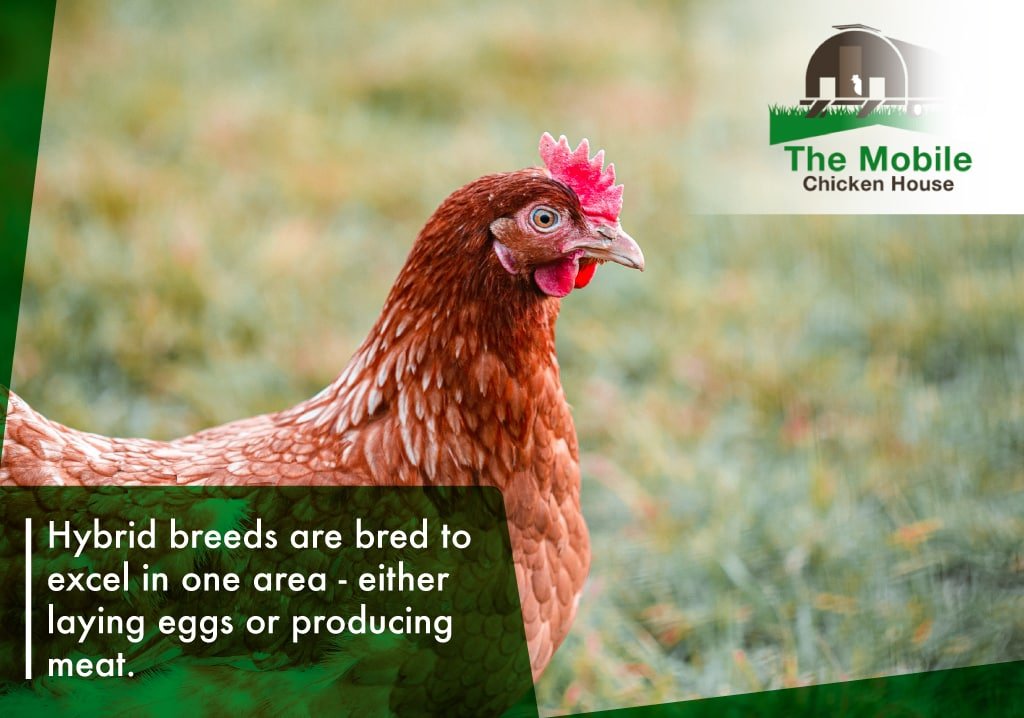
For example, hybrid egg layers are usually light (meaning they take up less space) and are fast maturing with good feed conversion. In other words, you get the same amount or more eggs than you do with a heritage breed, all while working a little less.
That’s why commercial farmers often opt for hybrid breeds while hobby farmers lean towards heritage breeds.
Both types of chickens are delightful - just choose the one that fits your goal with your chickens.
Top 3 Heritage Chicken Breeds
Ok. let’s get into the real meat of this article. After you’ve asked all the background questions and determined whether you want a hybrid or heritage breed, it’s time to pick a breed.
Here are our top 3 heritage breeds.
1 - Plymouth Rock
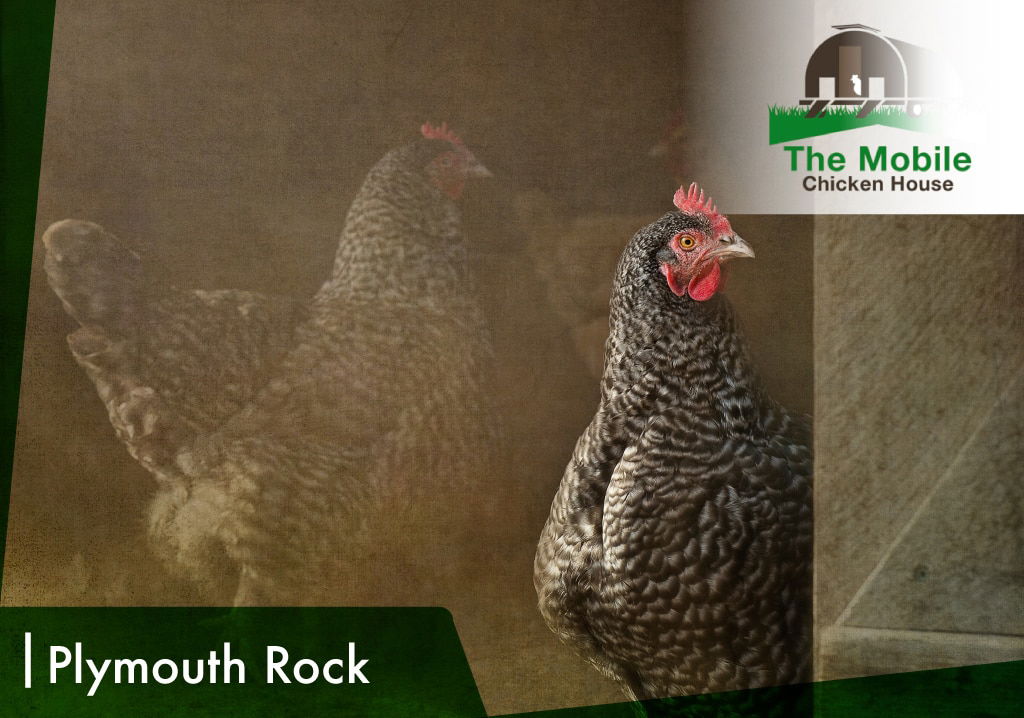
Characteristics and Personality
There are seven recognized varieties of Plymouth Rock chickens - and they all look a little different. The most common of these is the Barred Plymouth Rock - identified by its barred plumage. Their beautiful black and white bars set them apart as elegant, majestic birds.
Plymouth Rock hens are also known for their size, averaging about 7 ½ pounds.
Generally, Plymouth Rocks are active, friendly with people, tame easily, and are not extremely aggressive with other chickens. In fact, most owners choose words like “calm” and “docile” to describe Plymouth Rock chickens.
Eggs
Plymouth Rock chickens lay around 200-280 eggs per year. Their eggs are large and have a pale to medium brown color. They lay well, even in cold weather.
Maintenance and Climate
Plymouth Rocks are hardy, meaning they can thrive in just about any environment. They handle both confinement and free-range scenarios well. They also have great genetics and often live for at least ten years.
Cost
One thing to note is that most hatcheries provide discounts proportionate to the number of chicks you buy. In this article, we’ll discuss how much 75 of each chicken breed costs. 75-day-old Plymouth Rock chicks generally cost around $3.50 per chick.
2 - Australorp

Characteristics and Personality
While there are several color variations of the Australorp chicken, the APA only recognizes the bird's original color - black. The Australorp also has striking, jet-black eyes as well as a dark beak giving it a mysterious appearance.
The Australorp is a big bird with hens weighing around 8 pounds.
Australorps are a pleasure to have around - they are a graceful, peaceful sight when they roam around a property. Despite their large size, they are not bullies. In fact, they are more laid back, and if you have a mixed breed flock, you’ll want to make sure the Australorps aren’t getting pushed around.
Eggs
Australorps are excellent egg layers. In fact, an Australorp holds the world record for egg output in a single year - 364 eggs!
Don’t expect to break world records when you purchase just any Australorp, but as a general rule, you can expect around 250-300 large brown eggs a year.
Maintenance and Climate
Like many heavy breeds, the Australorp is prone to obesity if kept exclusively in confinement. That means you’ll have to put in a little work to give them some free-range opportunities.
However, in general, Australorps are robust, healthy chickens with very few health problems. They can withstand cold winter temperatures easily and can even handle temperature swings.
Cost
75 one-day-old Australorp female chicks generally cost around $3.50 per chick.
3 - Rhode Island Red
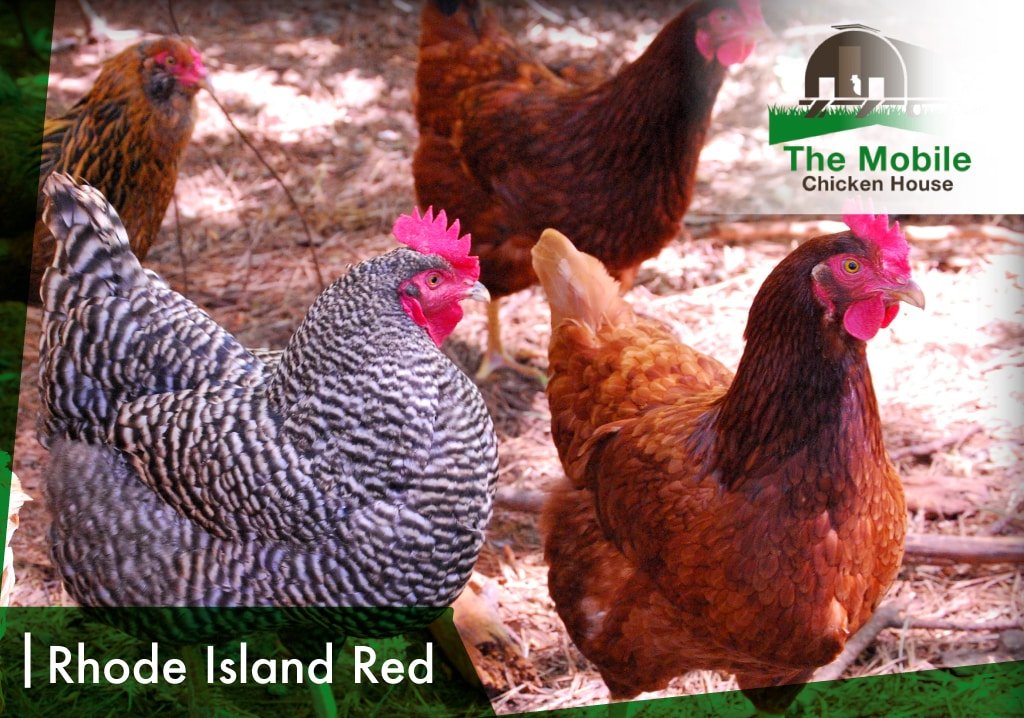
Characteristics and Personality
There’s a pretty good chance that when you picture a chicken in your mind, you think of a Rhode Island Red chicken. A Rhode Island Red’s glossy, luxurious, red feathers are iconic when it comes to chickens.
In general, hens weigh around 6 ½ - 7 ½ pounds.
Rhode Island Reds aren’t antagonistic, but they can be cranky towards each other. (Maybe their feistiness comes from their coat of red feathers? 🙂 They are a bit standoffish towards humans but are energetic and fun to watch. Perhaps the right word to describe Rhode Island Red’s behavior is “confident.”
Eggs
Simply put, Rhode Island Red chickens are little egg-laying machines. They will often produce more than 280 large brown eggs each year.
On top of that, Rhode Island Red eggs are known to increase with size each year!
Maintenance and Climate
Rhode Island Reds are hardy and can handle most conditions, though they do better in colder climates than warm ones. As a bonus, they rarely fall victim to illnesses.
Since Rhode Island Reds are exceptional foragers, you may be able to cut down on feed costs when you raise them. The downside of this is that Rhode Island Reds need a little more space than some other breeds to burn off their energy.
Cost
75 one-day-old Rhode Island Red female chicks average around $3.30 per chick.
FUN FACT: If you want colorful eggs, you may want to consider buying an Easter Egger. The Easter Egger is not a recognized breed but rather any chicken with the “blue-egg” gene. The most popular crosses are various Ameraucanas, Araucanas, and Marans breeds.
Easter Eggers have oocyanin on the surface of their eggshells, which gives the eggs a bluish tint. Cross your Easter Egger with the right breed, and you get eggs ranging in color from pink to blue to olive. That could be especially fun if you are a backyard chicken raiser who just wants to have some fun with your flock.
Top 3 Hybrid Chicken Breeds
If your primary interest lies in egg production, you should consider a hybrid breed. Here are our top choices.
1 - Black Star
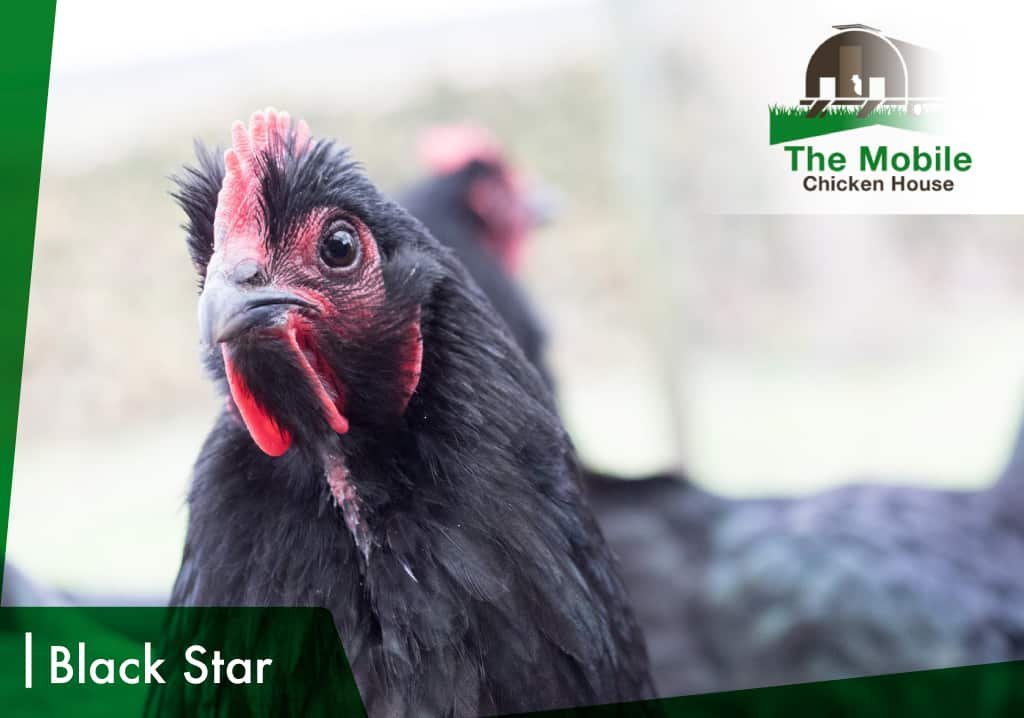
Characteristics and Personality
Black Stars are a cross between a Rhode Island or New Hampshire rooster and a Barred Rock hen.
Hens weigh around 5 pounds and display striking black feathers flecked with gold on the breast area.
In general, they are quiet birds with a sweet disposition, unlike feisty Rhode Island Reds. Black Stars are so friendly you can even cuddle with them if you raise them carefully.
Eggs
The Black Star lays around 5 eggs per week. Add it all up, and they produce about 300 eggs per year. While that’s not as much as some other hybrid breeds, their eggs are large to extra large in size.
Maintenance and Climate
For the most part, Black Stars are remarkably healthy and robust. They will tolerate cold and heat as long as they have shelter and food.
Beyond that, Black Stars have a great feed conversion ratio. In other words, you don’t have to feed as much as another breed might take to get the same amount of eggs.
Black Star chickens do well in both confinement and free-range scenarios, giving you a lot of flexibility in raising them.
Like most hybrids, Black Stars produce a lot of eggs but don’t live as long as heritage breeds. Most Black Stars have a life expectancy of 4-5 years.
Cost
75 one-day-old female Black Stars usually cost slightly less than some breeds, averaging around $3.00 a chick.
2 - Golden Comet
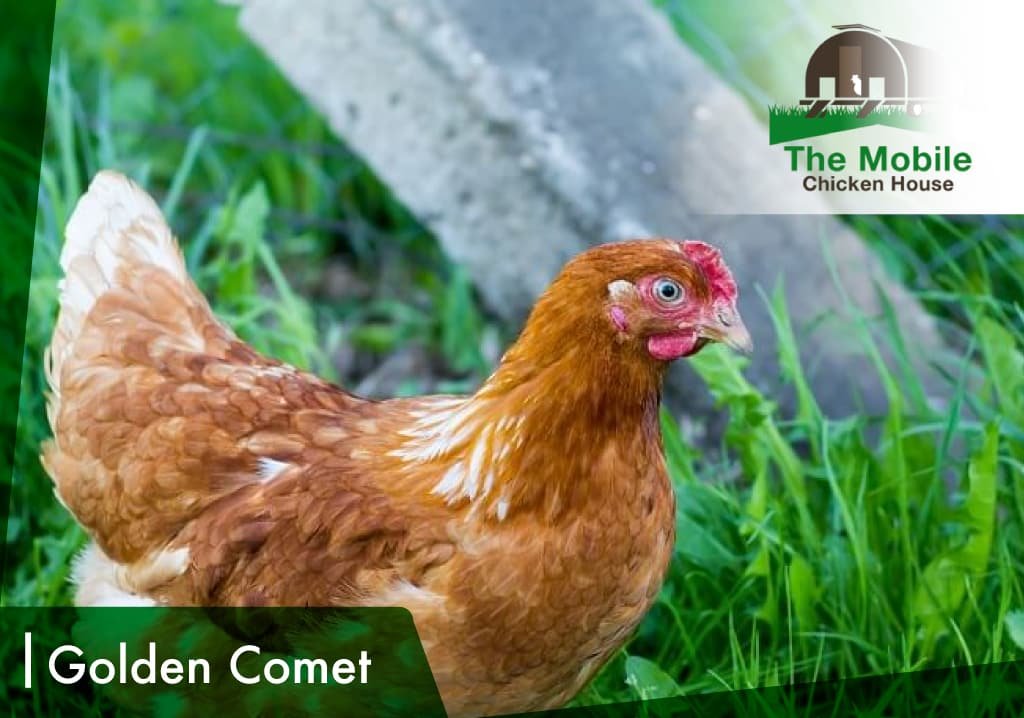
Characteristics and Personality
The Golden Comet chicken was developed in the United States as a hybrid breed by crossing a New Hampshire rooster and White Rock hen.
The result is a hen that weighs around four pounds and displays golden-brownish feathers. These feathers take on a beautiful gold tint when the sun shines on them, giving the Golden Comet its name.
Golden Comets are friendly and docile. They are often viewed as peacemakers - moving away from fights and avoiding pecking orders. This makes them great pets as well as egg producers.
Though Golden Comets aren’t flighty, they are active and curious. While this delights some owners, and makes them interesting to have around, it can lead to fence hopping from time to time.
Eggs
Golden Comets lay eggs in a prolific fashion. You can expect about one egg per day from Golden Comets starting at the young age of 16 weeks. Yearly averages for Golden Comets are right around 330 eggs per year.
Maintenance and Climate
Golden Comets are healthy, robust chickens. However, since they were bred for high production, their life spans are shorter than other heritage breeds. It’s normal for a Golden Comet to live 4-5 years.
As high-volume layers, Golden Comets may require extra calcium in their diet.
Thankfully, Golden Comets can tolerate a wide array of climates, making them an excellent option for most areas of the U.S.
Cost
75 one-day-old female Golden Comets usually cost around $3.50 per chick.
3 - Hy-line

Characteristics and Personality
There are a wide variety of Hy-line chickens that includes white, brown, silver-brown, and gray colors. The most common is the Hy-line Brown breed, which shows off brownish-red feathers with white flecking.
Hy-lines are little hens and usually weigh around 6 pounds.
These little hens are friendly and calm. They are also quiet, passive, and non-flighty, so they are well suited to interact with humans and keep peace among themselves.
Eggs
We don’t actually know what breeds are crossed to create a Hy-line chicken, but we know this much - they can lay eggs! Hy-lines produce more than 300 large, brown eggs annually.
Maintenance and Climate
Hy-lines are wonderfully low-maintenance chickens and adapt easily to various climates and surroundings. Being the prolific egg layers that they are, Hy-lines may need supplemental protein and calcium to keep them going.
However, Hy-lines are known for their economic feed consumption, so you can likely recoup costs for quality feed by using less of it.
Cost
The cost of Hy-line chicks is very similar to that of the other breeds discussed in this article. To get a specific price, contact Hy-line directly.
Conclusion
Whether you want to eat healthy, delicious eggs or make a living selling mobile pastured eggs, raising your own layers is a great idea.
Just make sure you choose the right breed, or you may be in for a nightmare experience.
Thankfully, you are now equipped with the knowledge to make an informed decision regarding the right chicken breed for you.
If you raise chickens and are looking for a healthy way to house them, check out The Mobile Chicken House.
We’ve created a mobile chicken coop that features automated feeding, watering, and lighting systems - all of which help you save time and money.
But the best part? Our houses give hens unlimited access to the outdoors. The result is healthy, happy birds, which means you get higher egg production.
Simply get a quote, and we will let you know what it takes to get a mobile chicken house to your front door. We look forward to hearing from you!

